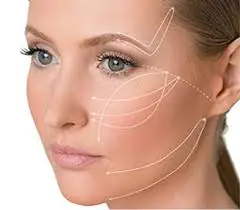
Thread lifting is something intermediate between non-invasive anti-aging procedures and plastic surgery. A successful result when using it depends on many factors. One of them is the quality and features of the material. How to find the best threads for a facelift, what are they?
Read in this article
Who needs a facelift?
Not every woman is eligible for rejuvenation using thread lifting. The method is suitable for those over 30 years old. Around this time, most people experience changes in appearance:
- ptosis of soft tissues of the face;
- violation of the clarity of the oval;
- drooping of the outer eyebrows;
- folds in the corners of the lips that violate their line;
- double chin.
Places for insertion of threads in accordance with the patient’s problem it solves
These problems are indications for the procedure. Typically, cosmetic threads are used for face lifting when more gentle methods do not produce results.
Contraindications to intervention
The use of thread lifting is unacceptable if there is:
- bacterial and viral infections;
- diseases in which poor blood clotting is observed;
- development of the inflammatory process in soft tissues;
- oncological pathologies;
- diabetes;
- intolerance to anesthetics;
- too thick skin;
- pregnancy and lactation.
Effect of the procedure
If your health condition allows you to rejuvenate with thread lifting, you always want to know in advance what the result of the procedure will be. Cosmetic threads for face lifting have the following effect:
- increasing skin elasticity;
- disappearance of pronounced, deep wrinkles (including around the eyes);
- alignment of facial contours;
- inhibiting the aging process of soft tissues and skin;
- returning to previous proportions, sculpting facial features.
Pros and cons of modern threads
The characteristics of the material that will become a framework for soft tissues and skin after the procedure largely determine the result of the intervention and its duration. The choice of threads for lifting depends on:
- what area of the face is supposed to be corrected;
- nuances of the structure of the epidermis and deeper layers of the face;
- degree of severity of age-related changes.
Smooth threads
The material for thread lifting has a smooth surface and is most often non-absorbable. These are silicone, polyurethane, polyamide. All components are strong and elastic to tighten a large amount of tissue when it is severely sagging. Therefore, surgical threads for face lifting are used when it is necessary to correct any area of the face. They are fixed to bone tissue, which, combined with strength and the absence of the possibility of biodegradation, gives a long-lasting lifting result - up to 4 years.
Mesothreads
Absorbable threads for face lifting are very popular when using this technique. They are very thin, so no incisions are required during insertion. Therefore, during the intervention, local anesthesia is mainly used, and the rehabilitation period will not take more than 7 - 10 days. The presence of this material (polydioxanone) in living tissues is quite physiological. It stimulates the production of your own collagen, which results in a tightening effect and overall rejuvenation of soft tissues and skin.
Of all the types of biodegradable threads, perhaps the best are spiral threads for face lifting. They correct the chin area, nasolabial folds, and eyebrow line. The spiral gives a more noticeable lifting result due to its ability to retain shape. The lift is stronger and lasts longer.
To learn about which threads to choose when performing thread lifting, watch this video:
Mesothreads also have negative sides:
- They resolve after a short period of time - 6 - 8 months. That is, the effect does not last long.
- With serious age-related changes, their use is pointless. Mesothreads are shown only at the beginning of aging.
- The introduction of mesothreads is a very delicate job. Therefore, you need a good cosmetologist, and the slightest error in installing the material can lead to facial asymmetry.
Notched threads
Notched threads for face lifting are also a commonly used material. Most of this type is made up of Aptos products. They are both biodegradable and non-absorbable. The notches act as frame holders, preventing it from moving and leading to facial asymmetry. In addition, this feature makes it possible to correct pronounced age-related changes, since the convex parts of the thread also serve as support for sagging tissues. They can take the form of elastic springs (especially effective in correcting nasolabial folds) or a hammock (used in eliminating a double chin).
Threads with notches are used in the correction of different areas of the face. But in all cases they are introduced through microscopic punctures, that is, damage during manipulation is small. And therefore, the recovery period will not be delayed either.
Threads with notches also include “Silhouette Soft”, consisting of a polypropylene base and lactic acid cones (that is, they are combined). Their advantage is both a durable base part and stimulation of natural tissue rejuvenation through the influence of dissolving nodules.
And yet, spring threads for face lifting are also not always ideal, as they also have disadvantages:
- They are placed in the subcutaneous fat layer. If the threads are inserted too close to the surface, they will cause unevenness on the skin. But if you place them deep, there will be no effect.
- The strength of the fastening also has a downside. If the body does not accept the material, reacting with inflammation, problems arise with extraction.
- There may be noticeable bulges at the attachment points. And the notches themselves sometimes also appear through the skin in other areas of the face.
To learn how a facelift is performed with threads, watch this video:
Other absorbable sutures
Biodegradable lifting material is not only polydioxanone. Collagen threads for face lifting also encourage the activation of natural rejuvenation processes. They are administered by injection according to a predetermined scheme. After 3-5 days of rehabilitation, the artificial material is not felt at all. But inside the tissues, new collagen cells are being produced. Due to this, the effect of tightening and rejuvenation is obtained, lasting 6 months.
Liquid facelift threads can be hyaluronic acid or polycaprolactone. They also provide lifting by stimulating the tissue's own resources.
The lifting effect when used will only be in the area of the cheeks and chin; these threads are not suitable for the forehead area. The result will last up to 6 - 8 months.
Choosing threads for lifting is a responsible matter. If it is incorrect, the result may be zero, or may leave the person in a worse condition than before the intervention. Therefore, it is always worth considering several options and assessing the possible consequences, including pain, bruising, and swelling.
The desire to maintain youth and be attractive at all times was natural for women. There were and are many ways to do this. Today there is a very effective and efficient method for such purposes.
This is a facelift using thread lifting. It is distinguished from all others by its durability and a wide selection of materials for its implementation. Today we will talk about what types of cosmetic threads for facelifts there are, how much they cost, what is best to choose to solve your particular problem, and what reviews clients leave about them.
Why do you need thread lifting?
Modeling the oval of the face using thin fibers is a relatively new type of cosmetic procedure. Something between traditional skin care methods and complex plastic surgeries. Over time, the facial structure begins to lose its elasticity and attractiveness, and unaesthetic sagging and deep wrinkles appear.
Compound
There are three types of lifting fibers. The first type is non-absorbable, they are made from platinum and gold. Partially absorbable and Teflon ones are also used, which dissolve over a very long time.
Previously, lifting bases were made using noble metals that have low chemical activity and are not rejected by the body; these were gold and platinum of the highest standard.
Now they are being replaced with more modern implants. They are made from lactic acid, caprolock and polypropylene and are well accepted by the body.
There are also biodegradable threads, which contain polylactic acid, the effect of which will be noticeable for about 2-3 years, as well as non-degradable ones, created from polypropylene, this composition lasts no more than 4-5 years. Rehabilitation lasts about 10-14 days, but within 30-40 days active facial expressions should be restrained.
Fastening methods
According to the method of fastening, facelift threads are divided into two types. The first type is fixed, they are attached near the temples or in the area of the ears. They differ from stand-alone ones in that they not only eliminate sagging skin, but actively model the oval of the face.
The second type is autonomous, which do not have fixation and cannot provide strong tension to the skin, but simply eliminate sagging and give a certain elasticity.
Texture
- Smooth. This type is used when working with the area of the cheeks, cheekbones, for lifting the chin and modeling the eyebrows. To fix them, it is necessary to make incisions up to 5 millimeters. Suitable for patients aged 45-50 years.
- Notched threads. The main feature of such implants is the presence of special hooks that help to secure themselves in the tissues, clinging like hooks. They are fixed in the subcutaneous layers at a depth of about 4–5 millimeters using micro-punctures.
There are several varieties for lifting different parts (hammock threads for correcting the chin and neck or spring threads, which are designed to shape cheekbones, cheeks and nasolabial folds).
Spiral threads. They allow you to achieve a fairly strong effect of modeling and tightening the oval of the face, this ensures the ability of the frame to take its previous shape after tension.
Spiral threads for face lifting are used both in combination with various types and separately. Their length is usually 40 or 50 mm.
Springs. They have an increased ability to keep the skin in a taut, healthy state. Due to its properties, this type of thread takes root well. Conical. This type was invented about 5 years ago and is popular among specialists. On these fibers there are cone-shaped nodules that act as fasteners, and after a year the cones completely dissolve.Features of the use of absorbable and non-absorbable
Soluble threads will completely disappear after a few months, having fulfilled their function. Today they are produced using polylactic acid and polydiaxanone.
However, you should not expect particularly high results from biodegradable materials, as from insoluble ones. After all, they do not have a rigid fastening and are placed by a cosmetologist close to the surface. Such an implant dissolves within 5-6 months, and new connective tissue begins to form in this place, which subsequently performs a lifting function.
This process activates collagen synthesis and the skin looks more youthful and elastic. The result lasts for a year or two, after which it is recommended to repeat the procedure.
Such threads are installed using local anesthesia; the entire procedure takes about 1 hour. After installation, small bruises and some swelling may remain for approximately 7-9 days.
The polylactic structure of the implant is suitable for patients with thin skin without excess subcutaneous fat; they are also recommended for people with minor age-related changes.
Non-absorbable threads are very thin and have increased strength, usually made of polypropylene. They are fixed in the area of subcutaneous fat, where they form a supporting frame and make it possible to effectively tighten the skin, maintaining the integrity of blood vessels and nerve endings.
The first such threads were smooth, and special return knots were made for fastening. Later they began to produce them from polypropylene with cones and special notches. Non-absorbable implants are carefully inserted under the skin and fixed in certain inconspicuous places.
Everything about ultrasonic facial cleansing: benefits, indications, contraindications and how the procedure works is here.
Photos before and after mechanical facial cleansing can be viewed by clicking here.
How long does the result last, before and after photos
Depending on the type of fibers used, it can last from 2 to 10 years.
The longest lasting effect is provided by a frame made of gold or platinum; it lasts up to 8-10 years.
See how your face transforms after a facelift:
The most popular varieties in cosmetology
APTOS
APTOS Needle - used primarily in surgery, as they are made from non-absorbable fibers and are tightly fixed in tissues using micro-incisions.
Typically, this type of lift is performed in the area of hair growth on the head for people with severe age-related changes, when other cosmetology products have little effect.
Non-absorbable or surgical - these are APTOS threads, which are produced using polypropylene, which are fixed in the subcutaneous fat layers.
The skin receives a good and high-quality frame. Threads can be completely smooth in structure, as well as with various notches and notches.
This type of lifting is effective in areas of pronounced sagging skin - these include nasolabial folds, facial contours, the area of drooping eyelids and double chin. The results from a facelift last for quite a long time – up to 5 years.
Mesothreads
The name 3D mesothreads was given because of a certain property of the invasive “guide” needle, which allows you to create full three-dimensional formation of tissue in all areas and directions. This property of the needle makes it possible, when forming contours, not only to produce high-quality tissue tightening, but also to simulate the contours of “youth.”
Such materials make it possible to create high-level relief.
The high elasticity of the mesothread gives the fabrics a good “springy” result, which increases significantly with the proper installation of several threads on one area of the face.
The created volumetric frame adapts well to tissues and does not cause rejection, allergic reactions or discomfort.
Gold and platinum
Gold and platinum fibers are classified as non-absorbable. They usually take root without problems and are well tolerated by the body due to their low chemical activity.
Such materials were pioneers in thread lifting. But even now such implants are very popular.
Silhouette Lift Soft
The method of forming an oval using this type of retainer makes it possible not only to very quickly, but also quite successfully and without risk to health to eliminate unwanted age-related changes. This technique can only be compared with a full facelift using plastic surgery.
This tightening technique is one of the most modern trends in cosmetology.
It allows you to eliminate signs of age-related tissue changes efficiently and in a short time, while side effects are practically eliminated.
The recovery and rehabilitation period is also significantly reduced.
This method was first tested among cosmetologists in the United States and Spain and has now become widespread throughout the world. The use of Silhouette Lift involves fixing non-absorbable threads made from particularly strong compounds that are highly biocompatible; they do not cause an allergic reaction and are well tolerated by the body.
Average prices
The cost of a thread lifting procedure depends on various factors: the type and shape of the threads and their quality, the material from which they are made, the country and level of the manufacturer. Also, the cost of a face lift with threads includes the services of a cosmetologist, rent of premises and other expenses of the medical center. Their number and location on the body are also of great importance.
- The average price of a procedure using Aptos Needle for tightening the soft tissues of the face and chin is 50,000-60,000 rubles.
Materials from the Aptos Vizage series will cost more and this is approximately 70,000-80,000 rubles.
The price category for lifting using mesothreads in various clinics ranges from 15,000 to 30,000 rubles. The cost of gold threads in various beauty salons ranges from 30,000 to 70,000; a platinum frame will cost 80,000-120,000 rubles. A lift using Silhouette Lift and Silhouette Lift Soft materials will cost approximately 40,000-60,000 rubles.You can find out how a facial cryomassage session works and what the prices are for this method of rejuvenation and cold treatment here.
And why they are needed, what are the indications and contraindications, and what are the features of cryosauna procedures, read here.
Customer Reviews
Valentina, 50 years old, accountant:
“As I got older, my face began to lose shape, and strong sagging appeared on my cheekbones and chin. I decided to have a lift using gold threads. The procedure was long and painful, but the effect was wonderful. The double chin has disappeared, the oval of the face has straightened out and become much younger. The cost of the entire session cost 50,000 rubles.”
Angela Ivanovna, 45 years old, sales manager:
“A year ago I had a cheek and cheekbone lift using mesothreads; a friend recommended a good specialist. Almost all the wrinkles on the forehead and in the corners of the eyes were gone; there was some slight pain during the session. The only drawback is restrictions during the recovery period. I’m happy with the result, I recommend it to all my friends.”
Natalya, 37 years old, housewife:
“I made the frame using Silhouette Lift, there were sagging and strong folds on the forehead.
The problem was corrected, but after the procedure there was severe swelling and bruising.
The doctor prescribed several healing medications.
They helped remove all the consequences of the operation and now everything is great, the skin has become smooth and elastic.
Of course, this is quite an expensive pleasure, but the effect is good and lasts for a long time.”
Margarita, 53 years old, director:
“The use of mesothreads left a good impression. The procedure itself lasted three hours, I did not feel any pain. But the recovery period was long, there was a feeling of tightness, and slight swelling arose. A month later it all went away and now I’m very happy with my face, it has become much more beautiful and younger!”
Conclusions, video
The choice of materials for this procedure is indeed very wide and it is not so easy to figure it out, but for an initial acquaintance this review will be quite enough. All further and detailed recommendations should only be given by a cosmetologist; he must also competently study your body and select materials that are optimal for your problem and will not cause rejection or allergies.
Before deciding on such a rejuvenation method, you need to try other options. If such a procedure cannot be avoided, then you need to undergo a thorough examination and pass all the necessary tests.
Before the procedure, you must exclude all contraindications, and after it, strictly follow the doctor’s recommendations for care during the rehabilitation period. Be healthy and beautiful at any age!
Here's what experts say about tightening threads:
Kogi threads, developed by Korean cosmetologists, allow you to tighten sagging muscle fibers and correct the oval shape without resorting to abdominal cosmetic surgery for a facelift. The innovative method of restoring natural firmness and elasticity to the skin using Cog mesothreads has become a real breakthrough in cosmetology.
It is much more effective than the usual Botox, peeling and biorevitalization, helping to restore and preserve the natural frame of the face, reinforcing the flabby structure of the skin. The method is not inferior in effectiveness to surgical facelift, but is less traumatic. Recovery after the introduction of Kogi threads is quick and painless.
What is thread lifting
Microinvasive intervention carried out by introducing special threads from different materials into the dermis (subcutaneous layer) of the face is called thread lifting. The method significantly smoothes out age-related changes and eliminates scars that create aesthetic imbalance.
Thread lifting is performed not only on the face, it perfectly rejuvenates and smoothes the neck and décolleté area. Thread lifting has become especially popular in domestic cosmetology in the last 20 years.
Description of Kogi threads
Kogi threads for face lifting are cosmetic threads made from natural biomaterial, absolutely compatible with the tissues of the human body. Kogi threads differ from other mesothreads by multiple converging and diverging notches called Cog (translated from English cog means tooth).
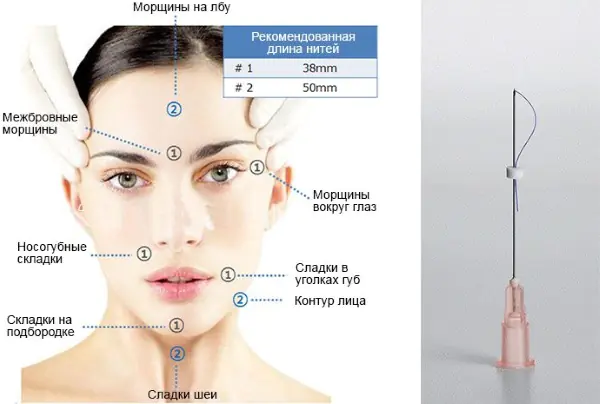
Reliable fixation of Kogi threads inside the subcutaneous layer of the dermis is ensured by straightening the notches.
Kogi mesothreads consist of a puncture needle, a hollow soft tube with a hard pin inside it (cannula) and a voluminous mesothread with notches. The needle is made of high-quality heavy-duty medical steel. Laser sharpening of the needle makes it easy, low-traumatic and almost painless to insert mesothreads under the skin.
Kogi mesothreads come in the following types:
- PLLA – the threads are particularly durable. The threads contain polylactic acid, which enhances collagen production and provides lifting similar to the effects of fillers. Threads of different lengths (90 - 150 mm) allow them to be used for reinforcing different areas of the face and tightening the skin on the neck. The effect lasts for a year;
- PDO – mesothreads are made from polydioxanone (monofilament suture material). Absorbs from six months to a year, leaving a natural collagen framework that lasts for about 2 years;
- DOUBLE COG is a thread with double-sided notches in the shape of a herringbone. In case of laxity and looseness of the dermis, it perfectly tightens it and retains its shape perfectly;
- single-sided threads have multidirectional notches on only one side of the thread body. Recommended for use in mild age-related skin deformations;
- multidirectional threads equipped with multidirectional notches around the thread. An excellent result is achieved in the case of sagging skin (the “baked apple” effect), with a deficiency of subcutaneous fatty tissue. Recommended for use for tightening and fixing large areas of skin.
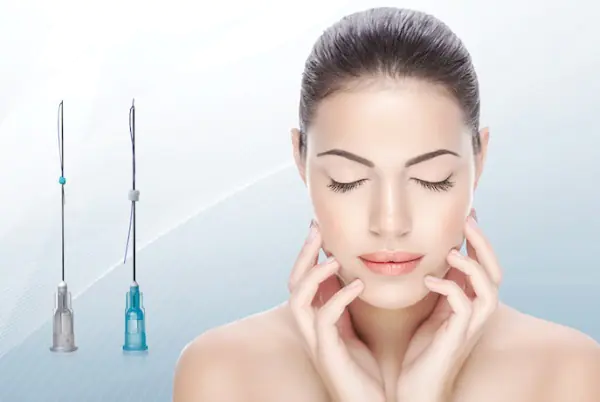
Today, cosmetologists have 3D and 4D Kogi threads available to them:
- 3D — Kogi threads have notches in three directions around the thread, used for enhanced lifting of the middle area of the cheeks and cheekbones. The insertion of threads is quite painful, so it is performed under local anesthesia. The procedure is simple and can be performed by a well-trained, experienced cosmetologist;
- 4D – the threads have numerous notches in 4 directions. Inserting a thread is a rather complicated procedure and can only be performed by a plastic surgeon. The effect is almost immediate.
First of all, when choosing the type of threads, the patient’s age and the characteristics of his skin (the degree of sagging of the facial skin, the thickness of the subcutaneous fat layer, etc.) are taken into account.
Action of threads
Kogi threads are implanted into the dermis of the face and, due to multiple multidirectional incisions, are securely fixed, providing the necessary tension to tighten the facial skin. They are introduced using small punctures and inserting a needle and thread under the skin. Then the needle is removed, leaving a taut thread in the specified direction.
The whole procedure takes a little over half an hour. First, the skin is well cleaned and disinfected with an antiseptic. Then, with a special marker, the pattern of threads is applied to the skin. An anesthetic cream is applied to the skin to reduce skin sensitivity. And after 10-15 minutes, when the skin is sufficiently frozen, threads are inserted.
To do this, small incisions or punctures are made in the skin. The thread is inserted under the skin to a depth of 3-5 mm and then pulled using a cannula along the marked lines. The doctor monitors the accuracy of thread insertion using a camera. Accuracy plays a huge role, since needle threads can cause microtrauma when pulled through the skin.
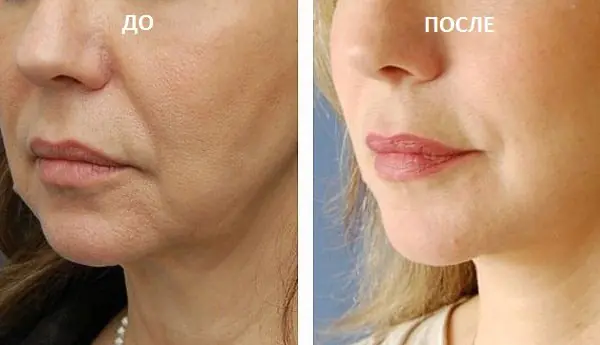
After installing the mesh, the doctor pulls the threads, using notches and knots, secures them, forming a strong frame. Then sutures are placed on the incisions and an elastic aseptic bandage is placed on top. The doctor removes this bandage a week later, after examining the patient.
Everything is strictly sterile, the threads must be unsealed in front of the patient.
If pain relief with cream is not enough and the patient still feels pain, an injection of lidocaine or ultracaine is given. The entire operation does not last long, on an outpatient basis. The patient can go home immediately. The rejuvenating effect is maximally manifested after about a month, although a visible improvement in the condition of the skin is observed immediately after the procedure.
The action of Kogi threads occurs in three stages:
- provide good tightening in the deep layers of the dermis, thanks to notches;
- in the connective tissue cells around the threads, the production of elastin and collagen is enhanced, its metabolism and renewal are accelerated. The structure and quality of the skin, its microcirculation are noticeably improved;
- When resorbed, they form a fairly strong collagen frame, which ensures the formation and fixation of the required contour of the face and body.
Depending on the condition of the skin, the doctor calculates the required number of threads required:
| Forehead and chin lift | Cheek lift, jowl removal | Smoothing of the nasolabial triangle | For a circular lift |
| 5-7 pieces each | 12-15 threads | 6-8 pieces | 40-50 threads |
Kogi threads not only help to secure the skin, they allow you to move and “tighten” it. A correctly performed procedure visually tightens and straightens the oval contour of the face, removes medium and small age wrinkles.
This procedure is recommended by doctors to patients aged 35 to 50 years, with slight sagging of the skin and swelling of the oval of the face. With severely weakened skin tone and severe ptosis, Kogi threads will not be able to give the desired result. In such cases, the patient is recommended to undergo abdominal or laser cosmetic surgery for a facelift.
Advantages and disadvantages
The introduction of Kogi threads, like any cosmetic procedure that violates the integrity of the skin, is associated with a certain risk. Therefore, you should think carefully, consult with a good doctor, weigh the pros and cons before deciding to undergo manipulation.
The advantages of using Kogi threads become obvious if you familiarize yourself with their properties:
- short duration of the procedure. One session takes about an hour, and the patient can go home the same day. The operation is performed on an outpatient basis;
- practicality (no more than 4 threads are required per area of treated skin);
- safety (absolute naturalness, excluding rejection and allergies). In addition, there is no threat of distant inflammation of the skin and purulent processes due to the disintegration of threads);
- prolonged effect (effect up to 3 years);
- compatibility with the use of other mesothreads and other cosmetic procedures;
- maintaining natural facial expressions;
- Applicability for various parts of the body.
The main and, probably, the only disadvantage of using Kogi threads is the need to reintroduce them every one and a half to two years. The threads completely dissolve during this time, turning into carbon dioxide and water, and are eliminated from the body naturally. In addition, the high cost of the procedure can be a disadvantage.
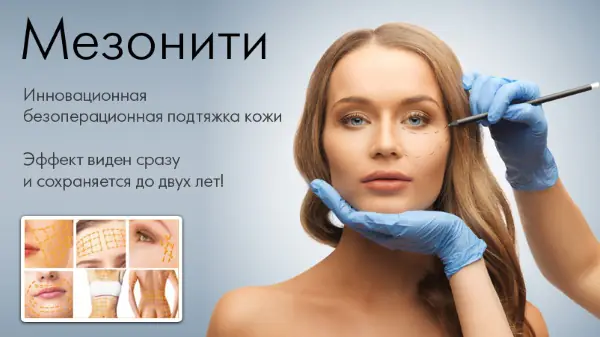
Such issues as some soreness, small wounds and swelling are inevitable accompanying phenomena and largely depend on the experience and skill of the plastic surgeon. The disadvantage of using Kogi threads is also age restrictions. Threads are indicated for patients aged 35 to 55 years.
Indications for use
Kogi threads for face lifting are used for the following age or other reasons for emerging pathologies of the skin of the face, neck and décolleté:
- fine and deep wrinkles;
- deep nasolabial folds;
- sagging and laxity of the skin;
- drooping eyelids and eyebrows;
- drooping corners of the lips (mournful folds);
- sagging cheeks (so-called jowls);
- swollen facial contour, displacement of the oval of the face, leading to pronounced asymmetry;
- ring of Venus (on the neck);
- bags under the eyes;
- double chin;
- postoperative scars;
- sagging and loose skin after liposuction;
- lethargy and looseness of the skin on the abdomen and buttocks;
- wrinkles in the décolleté area.
In addition, Kogi threads can provide additional volume to certain areas of the face, such as cheekbones and cheeks.
Contraindications
The use of Kogi threads is not recommended in the following cases:
- pregnancy;
- the presence of infectious and viral skin diseases;
- low blood clotting;
- excess production of sebum, causing clogging of small wounds and their inflammation;
- Severe sagging of the skin, critical swelling of the oval of the face;
- presence of cancer;
- diabetes mellitus 1 and 2 degrees;
- age up to 35 and after 55 years.
If you are individually intolerant to anesthetic drugs, the procedure will have to be carried out without pain relief, which is contraindicated if you have a low pain sensitivity threshold.
The best Kogi thread manufacturers: review and prices
Kogi threads for face lifting from Korean manufacturers are presented on the domestic market of cosmetology services. They differ in quality, price, and application features. The cost of the service depends on the manufacturer, region, specific clinic, and qualifications of the plastic surgeon. Prices for Kogi threads vary from 2000 to 3000 rubles. for one thread.
Before turning to specialists for the procedure for installing Kogi mesothreads, it is worth familiarizing yourself with the different types of Kogi threads from various manufacturing companies. You need to be confident in the experience and qualifications of the doctor to whom you give money and trust the most precious things - health and beauty.
To do this, you need to read the reviews of patients who have previously used the services of this doctor, about the doctor himself and about the clinic as a whole. Today, every reputable and competitive clinic has its own website on the Internet, which is constantly updated and accessible to every user.
Korean threads under the Omega brand
The most popular lifting mesothreads in Russia today remain the Omega brand from the Korean manufacturer OV World. This company was the first in Korea to receive a patent for the production of kogi threads from the monofilament suture material polydioxanone.
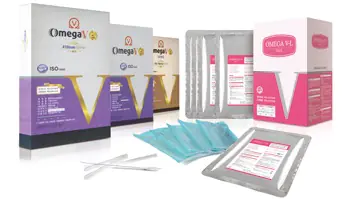
Mesothreads under the Omega trademark are available in the following variations:
| Omega V-L Original (140 mm) | Omega V-L Spike | Little Omega V-L |
| the notches are directed in one direction | the notches are arranged in a spiral around the thread body, directed in different directions | the threads are short, the teeth are multidirectional |
| minimally invasive facial skin tightening along natural lifting vectors | for more reliable tissue fixation and long-lasting results | delicate lifting of the nasolabial area, drooping eyelids and eyebrows |
The best effect is obtained by using these three types of threads in combination.
Beaute’ lift V Line
Beaute lift V-LINE threads are manufactured in Korea, puncture needles are sharpened and polished using laser technology in Japan. The threads undergo additional polishing and contain only natural material, polydioxanone, which is completely absorbable within six months.
When it disintegrates, it is replaced by connective tissue, which further strengthens the facial frame. The versatility of this brand of threads lies in the variety of their lengths and diameters, this allows them to be used in various combinations to achieve the best effect.
EVE COG
EVE COG lifting threads from Meditronic DongJun allow for high-quality lifting, reinforcement of the facial oval frame and improve the relief and structure of the skin. EVE COG threads differ from similar products from other manufacturers, first of all, in the high-quality steel (SUS304) from which the needle is made.
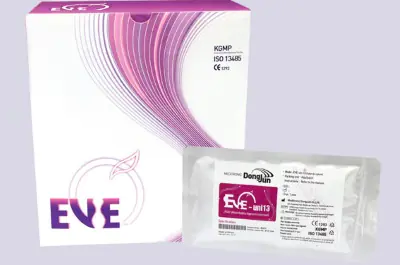
The puncture needle is very elastic and flexible, allowing it to easily penetrate the deep, middle and upper layers of the subcutaneous epidermis, and perform manipulations up and down and left and right.
The thread is made of high quality polydioxanone, the thread is thick enough, the needle is long, allowing you to hold the thread comfortably. Laser sharpened needle. The thread is additionally polished, which avoids the “sawing” effect when the thread passes through the fabric.
VERSATILE Uni
Ultra-strong threads with notches arranged in a spiral are the latest development in aesthetic medicine. The length of the threads is 50-60 mm. The design of the thread in the shape of a spiral allows it, after tension, to return to its original position, tightening the skin and maintaining lively natural facial expressions. Used to correct the nasolabial triangle, eliminate the network of wrinkles in the eye and eyelid areas.
Comparison of Kogi threads with other types of mesothreads
Today, aesthetic medicine has at its disposal, in addition to Kogi threads, two more types of mesothreads:
- linear – to rejuvenate the neck line, décolleté area and eliminate the double chin. They are characterized by low cost and ease of installation;
- spiral – universal threads. The length of such a thread when stretched is from 50 to 60 mm. They are most often used in combination with other types of mesothreads to correct the décolleté area, nasolabial folds, and fine age wrinkles.
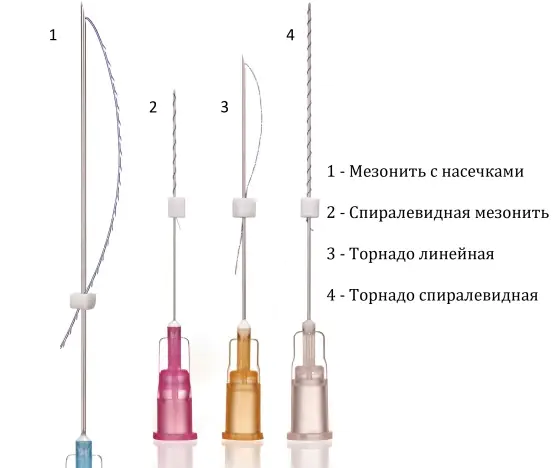
The figure shows the types of Kogi threads for face lifting.
Kogi threads differ from them in a more pronounced quick result, thanks to the notches. These notches, like anchors, hook and pull the tissue, reducing and securing the treated area. The excellent lifting effect from the introduction of Kogi threads can last from 3 to 5 years.
In addition, the advantage of Kogi threads is their biodegradation - Kogi threads dissolve in the body over time, breaking down into carbon dioxide and water, and are completely eliminated from the body. These threads are absolutely hypoallergenic and compatible with other drugs and plastic medicine techniques.
Features of the rehabilitation period when using Kogi threads
Kogi threads for face lift should take root well after installation. Proper rehabilitation is half the success of the procedure for implanting Kogi threads.
The following rules must be observed:
- On the day of thread insertion, you should avoid hot and hard foods;
- After installation, do not touch your face with your hands, refrain from any facial expressions;
- Using cold compresses on bruises and hematomas that have formed;
- In the first week, wash your face with soft gels that do not contain alcohol, abrasives or acids;
- In the first three days, wipe the puncture sites two to three times a day with an antiseptic recommended by your doctor;
- Sleep on your back for two weeks, preferably with your head elevated;
- Give up decorative cosmetics for a week;
- Avoid direct sunlight for two weeks, do not visit the solarium;
- Do not visit the swimming pool, bathhouse or sauna for two weeks, do not wash your face with hot water, or steam your face;
- Avoid strenuous physical activity for three weeks;
- Stop drinking alcohol for two to three weeks.
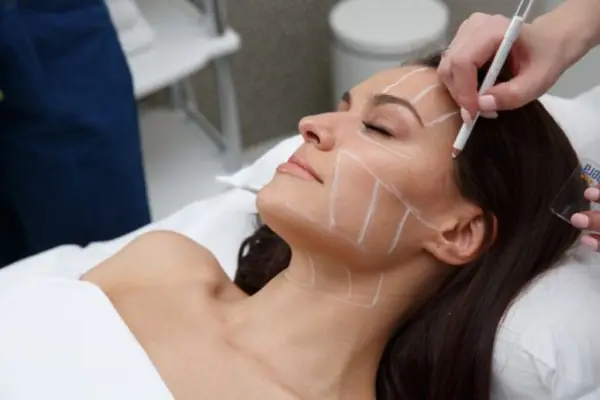
If you follow these simple rules, the rehabilitation process is easy and painless and the threads take root better.
Side effects
Despite the absolute naturalness and hypoallergenic nature of the material from which the threads are made and the low traumatic nature of the procedure, When using them, some side effects and complications are possible:
- "Accordion" effect. The needle must be inserted into the subcutaneous fat layer strictly in a certain direction, along pre-marked massage lines. At the slightest deviation from the desired direction, the thread will wrinkle, this forms a fold that does not disappear even after the mesothreads are reabsorbed. To correct the resulting defect, one has to resort to abdominal or laser plastic surgery;
- An inflammatory process, even necrosis, may occur if the puncture site is infected;
- Formation of tubercles on the skin if the thread is not straightened out properly;
- For deep facial and age wrinkles, deep ptosis, the use of Kogi threads may not give the desired result.
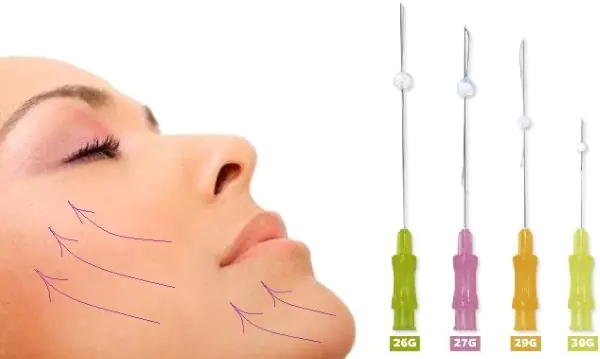
Kogi threads, despite their effectiveness and apparent ease of installation, are not a panacea, a kind of magic remedy for a facelift. You should not expect miracles; the method may not be effective in cases of severe age-related changes, severely sagging skin, large jowls, and deep wrinkles.
In such cases, you have to resort to abdominal or laser plastic surgery. Only an experienced cosmetologist can correctly determine what the skin needs and prescribe the correct treatment.
Video about Kogi threads for face lifting and their effectiveness
Facelift with 4D threads:
Application of barbed threads:



